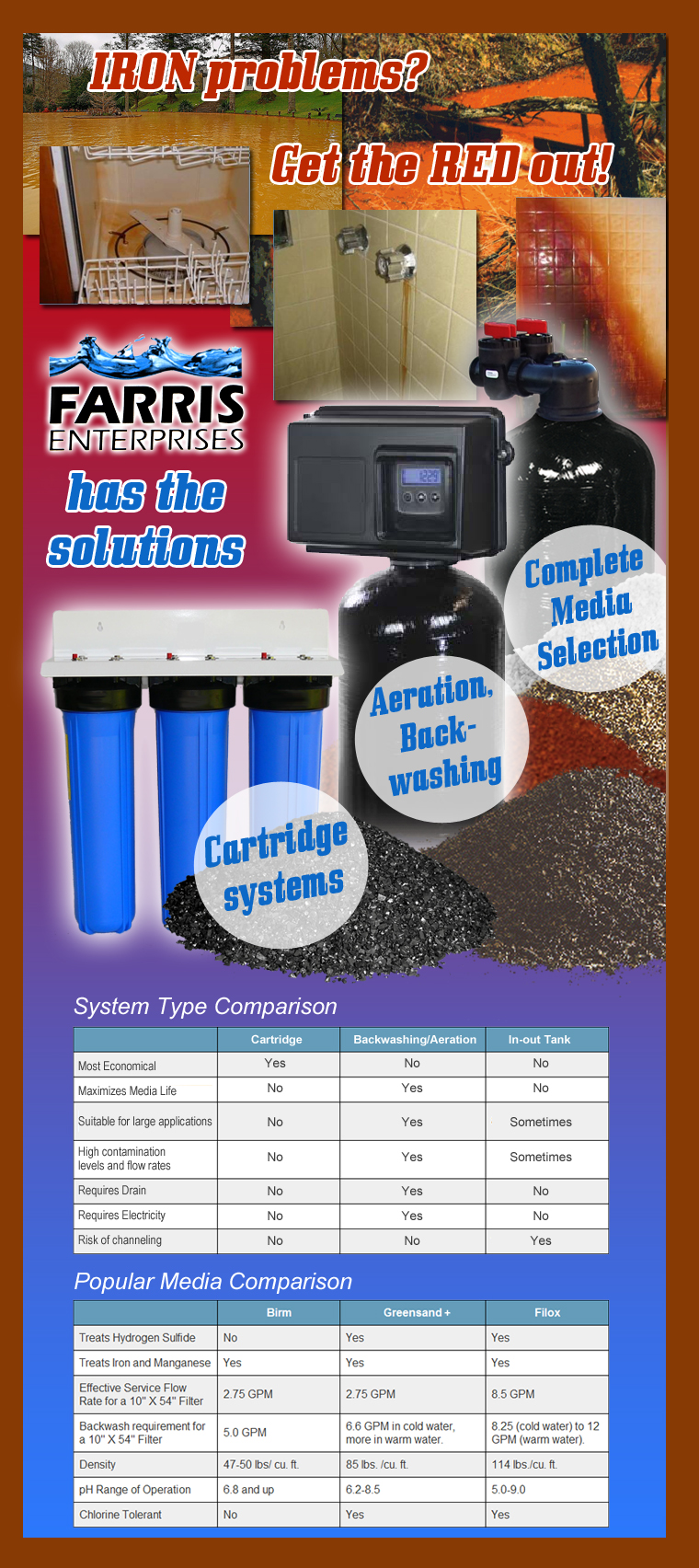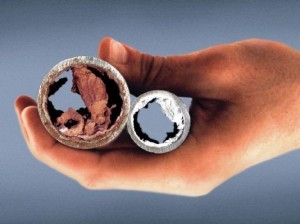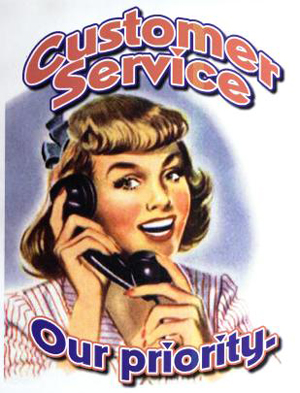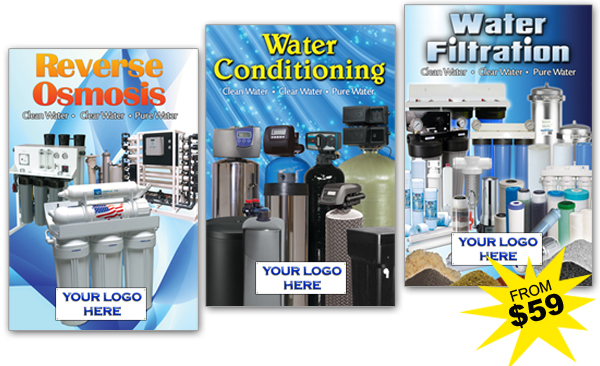Iron Solutions


Health problems associated with iron and manganese are not significant. But, issues with these contaminants can become an extreme hassle.
Iron and manganese are metallic elements found in rock. They are commonly found in groundwater and less common in surface water.
The secondary drinking water standards, or maximum contaminant levels (MCLs), for iron have been set at 0.3 ppm and manganese at 0.05 ppm, but the EPA has yet to set any limit to enforce.
Health problems associated with iron and manganese are not significant. But, issues with these contaminants can become an extreme hassle. Most problems occur in pipelines, meaning repairs are going to take time and money.
Iron and manganese are capable of plugging or fouling pipelines, pressure tanks, water heaters as well as softeners. This can cut down the consumer’s water supply or softening equipment.
“Most water treatment professionals would agree that softening using ion exchange for iron and manganese removal can be efficacious (if the elements are in the dissolved state),” said Greg Gilles, vice president and principal of AdEdge Technologies Inc. “Other factors, such as water hardness, salt demand and eventual fouling of the cation resins, over time [should] be considered in the selection. This method is commonly used for residential treatment when hardness reduction is also a goal.”
Water softeners can be a good way to reduce iron and manganese, but there are other methods that may be suitable for your situation. You have to explore those options to find out which is the best.
 Many water treatment professionals turn to chemicals in order to remove or suspend ferrous iron in their method of water treatment. Clear water iron must be transformed into a filterable ferric iron in order to remove this nuisance contaminant, or it must be suspended with chemicals to keep it from staining.
Many water treatment professionals turn to chemicals in order to remove or suspend ferrous iron in their method of water treatment. Clear water iron must be transformed into a filterable ferric iron in order to remove this nuisance contaminant, or it must be suspended with chemicals to keep it from staining.
Softeners can be used and ion exchange will work for low levels of iron, but there are applications where ion exchange is not possible or practical. Let’s take a look at a filter media that works very well at removing iron without chemicals or regeneration.
Filter Media
Basic iron removal media (BIRM) is effective in removing low levels of iron. There are some parameters and specifications that must be met in order for this very dense oxygen catalyst to work properly and successfully.
There are some other specifica- tions that have to be met in order to achieve optimum results and successful iron removal.
The proper testing of the water cannot be stressed enough when employing this type of media for water treatment because there are other contaminants that can cause failure or premature reduction of this media’s activity. Chlorine and ozone are not very compatible, oil and hydrogen sulfide hinder performance, and polyphosphates can coat the outside of the BIRM, thus reducing the catalyst capabilities. Matching the correct media and proper flow rate with each application in water treatment determines the success of the water treatment professional. Understanding what contaminants need to be removed in order to achieve the best effluent water is the most important thing to remember when designing a system.
BIRM is very low maintenance. It requires backwashing only. No chemicals are needed for regeneration and if backwashed often and properly, the life of the BIRM is exceptional. We applied this media to an irrigation system that also was used as a pre-filter for a softener. The softener worked very well and the system also removed the iron and prevented staining in the irrigation process. This same system was used to fill a small pond, swimming pool and hot tub, but after about five years the media became fouled and was replaced. The oxygen levels were low and the tannin levels of the influent water was very high, so in theory the expected life of the media exceeded the expectations of the system designers. The filter was overrun many times and after constant bleed-through, it was determined that the time had come to re-bed the filter.
Mixing Media
With the performance of BIRM, the system designers also mixed in some Filox-R in the re-bed mixture. This media is a higher concentration of manganese dioxide than BIRM, but also increases cost. There was a tradeoff because less BIRM was used, and, with using the Filox-R, the designers hoped for a longer run and better filtration performance. The specifications for the Filox-R are much different, however, from the BIRM; therefore, the manufacturer should be contacted before implementing any application. Again, proper water testing cannot be stressed enough when designing a system that will deliver desirable results.
The iron filter that was used consisted of a 21-by-69-in. vessel and the distributor had laterals to help in backwashing the media thoroughly. The control head used was a Fleck 2850 flat cap, time clock, backwash valve. The unit used 6 cu ft of BIRM, but we found with use that 9 gpm was the best flow rate with no bleed-through. According to specifications, the unit should have been good for a higher flow rate, but that was not feasible or practical. The shortfalls of the filter were explained in detail to the customer before installation, so any failure to reach desired results did not present any dissatisfaction.
The irrigation system was designed to keep each zone at a lower flow rate and more zones were implemented. It was very crucial that the flow levels were not exceeded and also that the amount of water on each run was not overextended. Constant overruns and high flow rates will cause premature fouling of the filter because of iron buildup and not backwashing contaminants thoroughly from the unit. The whole system worked remarkably well for many years. In the long run, the unit was cost-effective and provided iron-free water. The treated water was brown when coming out of the faucet and exceeded the specifications set forth by the manufacturer. The iron level was 3.5 ppm, tannins were high, manganese was 0.5 ppm, hardness was 22 grains and there were high sulfates. We had to chlorinate the water at least once per year to help control iron bacteria.
Effective Application
A good water treatment professional can be successful if he or she tests the influent water properly and applies the effluent water correctly. Water treatment professionals must also explain the system sufficiently to the user so that if there is dissatisfaction, the user does not feel cheated or ripped off. Sometimes a trial and error method needs to be used to test a system design. But if there is enough time for understanding the application and doing the math, a water treatment system can be implemented without problems, and customers are very pleased with performance.
Always refer to the manufacturer’s specifications and supplier’s engineers for help in the design process. This is just one method of dealing with iron removal and not a cure-all. It is environmentally friendly so you can think green while removing the brown.
Author’s note: Manufacturer’s specifications can be found at www.clackcorp.com for BIRM and www.watts.com for Filox-R.
Jeff Roseman, CWS-VI, is a consultant and freelance writer in the water industry. Roseman is a member of the WQP Editorial Advisory Board.
Source: Water Quality Products February 2010

If you do not have the time or dedication to do it right the first time, what makes you think you will have the time or opportunity to do it twice? In the water treatment industry, there are many shortcuts available. They may look appealing at first; however, the long-term result could be the erosion of your reputation and customer base.
We are all familiar with low-quality products and undersized systems advertised at prices so low it is hard to understand how a legitimate business could keep its doors open selling them. The truth is, the end users who purchase these water conditioning products often find themselves searching for an alternate system when the product fails prematurely and the selling company is unable to provide service.
Establishing a Reputation
Key factors when buying or selling include finding a trusted name, a reputation for quality and evidence of an established, legitimate business operation with a long-term focus. People flock to big-box stores like Home Depot for flooring, roofing and other similar services, because Home Depot, like many large retailers, has a trusted name, a solid reputation and is well established.
Sylvia’s Flooring and Wallpaper may provide superior service at lower prices, but Sylvia’s is at a disadvantage. It can improve its position by maintaining a professional showroom, being licensed, bonded and certified, and providing a readily available list of referrals.
Like most people, I am willing to pay higher prices for items I perceive to be from a legitimate seller or an established merchant. I do not buy tamales from the back of someone’s car or stereo systems from a sidewalk vendor.
Do not battle over offering the lowest price or matching another supplier’s ambiguous offers. Instead, sell by doing it right the first time and providing a sense of quality, value and security. Stand behind the design, installation and ongoing maintenance of the product. Do not be afraid to lose a job if the only way to salvage it is by cutting corners—do it right or pass it up. Losing a job occasionally may have a perceived immediate negative impact, but the long term will be filled with business generated by a stellar reputation for providing consistent value and fantastic customer service.
Listening to Your Customers
You can use your professional experience to provide recommendations, but in the end, be sure to have a thorough understanding of what customers need, want and expect. If they have lived with a water softener and enjoy its benefits, be careful about selling them an alternative. Many softener alternatives are effective and offer desirable benefits, but they do not currently provide all the features of a traditional softener.
If the customers are looking to eliminate spotting on shower doors and other surfaces, offer clear information prior to the sale. While softeners and some alternate systems will make spotting less obtrusive, they will not prevent it completely. Spotting is the result of minerals left behind after evaporation. Softened water may not contain “hardness” minerals, but the overall quantity of minerals is essentially the same as in hard water. The spots will be easier to clean, but they will not magically fail to appear. Spot-free water is typically accomplished using reverse osmosis (RO) and/or demineralization.
A customer might desire “pure” drinking water with no waste to the drain. You could offer a three-stage filter culminating in an ultrafiltration (UF) membrane. This is an excellent point-of-use filtration system, but it will not provide bottled-quality water. UF removes most suspended matter, and when combined with carbon filtration makes a superb drinking water system, but the customer expects significant reduction of total dissolved solids. This is typically accomplished using an under-sink RO system.
Unfortunately, most residential RO systems waste 3 to 12 gal for every gallon produced, so this would not meet the customer’s parameter of no wastewater. There are zero-waste RO systems that run the concentrate back into the hot water side of the home, so this may be an option. Other systems are highly efficient and may be an acceptable compromise. It is important to listen to the customer’s desires and provide guidance based on your professional experience.
Knowing Water Quality
Whether you rely on a lab or onsite testing, it is critical to know the influent water conditions you are battling. It is a waste to install a filter to remove a specific contaminant, only to have the filter completely fail due to interfering contaminants. Know what you are dealing with before going all in. Accurately sizing and configuring systems is a significant advantage you can offer.
It is fortunate that water treatment is complex, as it creates a separation between the professionals and the pretenders. Improperly sizing a point-of-entry carbon filter will result in diminished removal performance and compromise the long-term capacity of the media. With 13-grains-per-gal influent, you could easily install a single 0.5-cu-ft-capacity softener and it would work. However, there are other factors to consider, such as system longevity, efficiency and the reserve capacity required for most single-meter-initiated systems.
Understanding this provides you with the opportunity to offer the correct system for the application. It may be a single system sized large enough to mitigate the capacity loss due to the reserve capacity setting. Or, it could be a single system incorporating proportional brining that calculates the percentage of capacity remaining and adjusts the salt use based on the capacity actually depleted. Then there is the twin alternating softener that in theory uses almost all of the available capacity before switching to the alternate tank. These advanced systems are only as good as the setup and initial configuration.
Introducing New Products
Be careful when taking on new products. Make sure they are properly tested under various conditions and that they come from reputable companies with track records for quality. Understand that even small components like carbon filter cartridges can vary vastly in quality. In some areas you can be open to fines and litigation simply by using carbon or other components that are “non-compliant.” It is critical to source items from trusted distributors performing due diligence to ensure their products perform consistently and comply with basic legislative requirements.
Follow plumbing codes and proper installation procedures to impress the customer, encourage future referrals and provide a sense of security. The last things you want are second thoughts or anxiety about whether a job was done incorrectly and may result in a leak or other failure. Leak detection devices will automatically shut off the water supply when a leak is detected and are available in a wide range of sizes. Any failure that does occur should be a rare, unexpected anomaly.
A properly configured and sized system with a professional installation will go a long way toward making your water improvement business a success. The way you operate your business is both a conscious decision and a decision of conscience.
Author: Jerry Horner
Source: Water Quality Products Magazine
Date: March 2012

Good customer service is the lifeblood of any business. You can offer promotions and slash prices to bring in as many new customers as you want, but unless you can get some of those customers to come back, your business won’t be profitable for long.
Good customer service is all about bringing customers back. And about sending them away happy – happy enough to pass positive feedback about your business along to others, who may then try the product or service you offer for themselves and in their turn become repeat customers.
If you’re a good salesperson, you can sell anything to anyone once. But it will be your approach to customer service that determines whether or not you’ll ever be able to sell that person anything else. The essence of good customer service is forming a relationship with customers – a relationship that that individual customer feels that he would like to pursue.
How do you go about forming such a relationship? By remembering the one true secret of good customer service and acting accordingly; “You will be judged by what you do, not what you say.”
I know this verges on the kind of statement that’s often seen on a sampler, but providing good customer service IS a simple thing. If you truly want to have good customer service, all you have to do is ensure that your business consistently does these things:
1) Answer your phone.
Get call forwarding. Or an answering service. Hire staff if you need to. But make sure that someone is picking up the phone when someone calls your business. (Notice I say “someone”. People who call want to talk to a live person, not a fake “recorded robot”.)
2) Don’t make promises unless you will keep them.
Not plan to keep them. Will keep them. Reliability is one of the keys to any good relationship, and good customer service is no exception. If you say, “Your new bedroom furniture will be delivered on Tuesday”, make sure it is delivered on Tuesday. Otherwise, don’t say it. The same rule applies to client appointments, deadlines, etc.. Think before you give any promise – because nothing annoys customers more than a broken one.
3) Listen to your customers.
Is there anything more exasperating than telling someone what you want or what your problem is and then discovering that that person hasn’t been paying attention and needs to have it explained again? From a customer’s point of view, I doubt it. Can the sales pitches and the product babble. Let your customer talk and show him that you are listening by making the appropriate responses, such as suggesting how to solve the problem.
4) Deal with complaints.
No one likes hearing complaints, and many of us have developed a reflex shrug, saying, “You can’t please all the people all the time”. Maybe not, but if you give the complaint your attention, you may be able to please this one person this one time – and position your business to reap the benefits of good customer service.
5) Be helpful – even if there’s no immediate profit in it.
The other day I popped into a local watch shop because I had lost the small piece that clips the pieces of my watch band together. When I explained the problem, the proprietor said that he thought he might have one lying around. He found it, attached it to my watch band – and charged me nothing! Where do you think I’ll go when I need a new watch band or even a new watch? And how many people do you think I’ve told this story to?
6) Train your staff (if you have any) to be always helpful, courteous, and knowledgeable.
Do it yourself or hire someone to train them. Talk to them about good customer service and what it is (and isn’t) regularly. Most importantly, give every member of your staff enough information and power to make those small customer-pleasing decisions, so he never has to say, “I don’t know, but so-and-so will be back at…”
7) Take the extra step.
For instance, if someone walks into your store and asks you to help them find something, don’t just say, “It’s in Aisle 3″. Lead the customer to the item. Better yet, wait and see if he has questions about it, or further needs. Whatever the extra step may be, if you want to provide good customer service, take it. They may not say so to you, but people notice when people make an extra effort and will tell other people.
8) Throw in something extra.
Whether it’s a coupon for a future discount, additional information on how to use the product, or a genuine smile, people love to get more than they thought they were getting. And don’t think that a gesture has to be large to be effective. The local art framer that we use attaches a package of picture hangers to every picture he frames. A small thing, but so appreciated.
If you apply these eight simple rules consistently, your business will become known for its good customer service. And the best part? The irony of good customer service is that over time it will bring in more new customers than promotions and price slashing ever did!
By Susan Ward, About.com Guide

Size Options:
16″ x 20″ $59.00*
20″ x 30″ $79.00*
24″ x 36″ $95.00*
Bad Behavior has blocked 20 access attempts in the last 7 days.